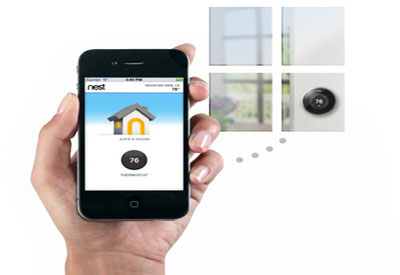Research Reveals Connected Tech Is A Bright Way to Recruit and Retain Talent for SMEs

Dec 7, 2018
Over half of small and medium-sized enterprises (SMEs) struggle to recruit talent and two in five have issues retaining employees, according to new research from Signify, formerly Philips Lighting. The findings show that employers are potentially missing a trick as over half of the employees surveyed* said they’d be in favour of their company investing in connected tech, specifically smart lighting, ahead of other improvements.
“High workplace satisfaction influences engagement and the reputation of a business as a great place to work. So it’s no surprise that SMEs are looking into connected tech options to enhance engagement,” says Bianca van der Zande, a research scientist at Signify.
“Nowadays with new technologies including LED and IoT, lighting can be a powerful influencer in the workplace. It has a big impact on how people can control lighting. With about half of the surveyed employees being in favour of having smart lighting installed, this could be an excellent way for SMEs to make the workplace more appealing to current and potential employees. We want to see this reflected in our working environments where connected tech is an important way to appeal to the best and brightest.”
When it comes to connected technology usage among SMEs, nearly one in five (17%) already use it in some form in their business, and just under a third (29%) are interested in doing so in the future. SMEs in the U.S. were more likely to cite employee retention as an issue their business faces than those in the U.K., 45% versus 35% respectively. Also, those in the U.S. appear to have more trouble motivating their employees, with two in five (40%) saying employee motivation is a problem, compared with less than a third in the U.K. (28%).
Dr. Craig Knight, Chartered Psychologist, Honourary Research Fellow (Exon), Director of Identity Realization Ltd., agrees on the importance of lighting at work, saying, “Light can have astonishing effects within the workplace. It has been shown to be at once invigorating, calming and sculptural (think theatre style lighting). Yet too many businesses pay scant attention to light, offering cheap rather than effective solutions. Science suggests that poor lighting strategies put wellbeing, happiness and productivity in jeopardy.”
The benefits of smart lighting could go beyond improved employee wellbeing and engagement. Of the SMEs that have areas that customers or clients visit, over a third (36%) thought that smart lighting would improve the customer or client experience. Employees are even more positive about the effects though, with more than three in five (61%)* believing that smart lighting would give customers and clients a more favourable opinion of a business.
Earlier this month Signify launched Interact Pro, a smart lighting system and software specially developed for small and medium-sized enterprises (SMEs). Find out more: https://www.interact-lighting.com/global/what-is-possible/interact-pro
Research findings at a glance
- 61% of employees believe that smart lighting would give customers a more favourable opinion of a business
- 54% of SMEs think having smart lighting in the workplace would have a positive impact on employee well-being
- 17% of SMEs already use connected technology
- 29% of SMEs are interested in doing so in the future
The study identified these perceived benefits of having smart lighting in the workplace:
- reduced eye strain (52%)
- improved ambiance (41%)
- less fatigue (37%)
- improved mood (35%)
- improved focus (33)
- improved well-being (29%)
- increased productivity (29%)
This article was first published online by Signify: www.signify.com/global/our-company/news/press-releases/2018/20181016-research-reveals-connected-tech-is-a-bright-way-to-recruit-and-retain-talent-for-smes
* Research was conducted in August 2018, polling over 5,000 adults from five different markets: China, Germany, the Netherlands, the UK and the USA. The samples are nationally representative of the populations.










![Guide to the Canadian Electrical Code, Part 1[i], 26th Edition – A Road Map: Section 10 – Grounding and Bonding](https://electricalindustry.ca/wp-content/uploads/2022/11/Guide-CE-Code-2.png)





